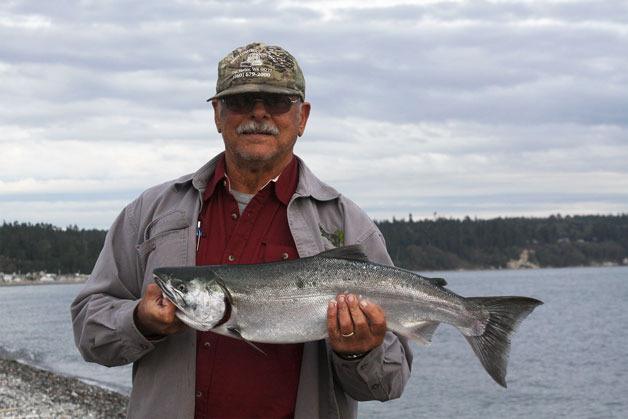For many salmon anglers who cast their lines in the waters around Whidbey Island, 2015 was a fishing season to remember with a solid presence of pinks topped off with a strong showing of silvers.
Anglers will have to hang on to those memories, at least for a while.
State and tribal leaders finally reached an agreement on Puget Sound fisheries Thursday, and the news isn’t good for Whidbey fishers. Fishing for silvers, or coho, is closed this year in the waters around Whidbey and nearly all waters of Puget Sound due to a sharp decrease in the number of fish expected to return this summer.
Because pinks only run in odd-numbered years, that means it will be a quiet late summer and fall on the western shores of the island.
It’s unusual for such news to come so late.
With the anticipated low numbers of returning fish, the fisheries co-managers struggled to come to an agreement on Puget Sound salmon seasons, resulting in several weeks of extended negotiations.
Unable to agree by May 1, the state Department of Fish and Wildlife closed many Puget Sound waters. The agreement by the state and tribes is an important step in obtaining a joint federal permit needed to conduct fisheries in Puget Sound, where some stocks are protected under the Federal Species Act.
Thursday’s news means anglers can start preparing for salmon fishing this summer in Puget Sound with a focus on hatchery chinook in order to protect coho and other weak salmon stocks.
Chinook season is scheduled for July 16 to Aug. 15 in Marine Area 9, which covers Admiralty Inlet, but could close earlier if the quota of 3,056 fish is met sooner. That’s good for boaters but doesn’t heavily impact shore anglers, who rarely catch chinook from the beaches.
In Marine Area 8-1, which includes Deception Pass, Hope Island and Skagit Bay, salmon fishing for all stocks will remain closed until November, when anglers can then retain hatchery chinook but must release coho.
Anglers fishing the San Juan waters that are part of Marine Area 7 may retain hatchery chinook in July, August and September but release all other stocks.
Essentially, there are no coho fisheries in Puget Sound with the exception of Hood Canal, which is expecting sufficient returns.
Ron Warren, assistant director of the fish program for the Washington Department of Fish and Wildlife, said in his 36 years with the state agency it’s been rare to see restrictions on coho quite like this.
“I think the last time we had a real downturn in coho abundance was back in the early 90s,” Warren said.
In March, the state announced that about 256,000 Puget Sound coho were forecasted for 2016, which is about one-third the size of the run predicted in 2015.
This year’s Puget Sound chinook run also is expected to be down from last year with about 165,000 fish returning, with hatchery fish making up the majority of the run.
The poor coho return is blamed on unfavorable ocean conditions such as warmer water as well as drought conditions in freshwater rivers, Warren said.
Since the coho that return to the rivers to spawn are generally 3-year-old fish and those conditions have been present in recent years, it doesn’t bode well for coho forecasts in the next couple of years as well, Warren said.
“That’s one of the reasons we’re taking such a conservative approach,” he said.
Salmon harvesting by commercial fishers and tribes also will be impacted, Warren said.
“The tribes did make some very dramatic changes in their fisheries package as well,” he said.
“It was a tough year for everybody.”



